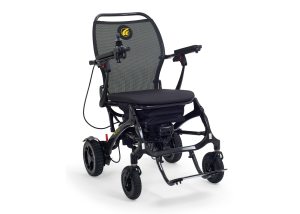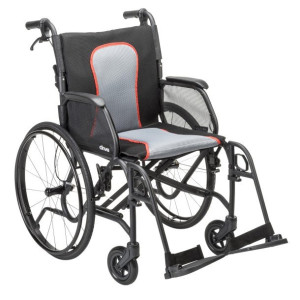Lifting our loved ones doesn't have to be dangerous
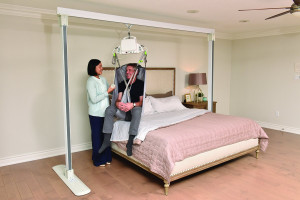
Safe Lifting of Patients and Loved Ones: Protecting Caregivers and Promoting Dignity
Lifting and repositioning loved ones or patients is a labor of love, but it comes with significant risks. Did you know that caregivers experience injuries at a rate of 9 out of every 100 annually? That’s over three times the average injury rate across all occupations. The primary culprit? Lifting, repositioning, and transporting people. These tasks place immense strain on the body, often leading to musculoskeletal injuries that can sideline caregivers and compromise their ability to provide care.
The Occupational Safety and Health Administration (OSHA) addresses this issue in its guideline, Ergonomics for the Prevention of Musculoskeletal Disorders. OSHA recommends that “lifting should be minimized in all cases and eliminated when feasible” in nursing homes and similar settings, including homes. Research shows that lifts exceeding 35 pounds can cause undue strain, increasing the risk of injury. Fortunately, using proper equipment not only reduces this risk but also promotes the health and dignity of those being cared for. A cost-benefit analysis further supports this: the investment in patient lifting equipment offsets the financial and physical costs of caregiver injuries.
Below, we explore three types of equipment designed to make transfers, toileting, and positioning safer and more comfortable for both caregivers and their loved ones. Each section includes guidance on how these tools can prevent injuries and enhance care.
- Use a Toilet Lift
Toileting can be one of the most challenging tasks for caregivers, especially in the confined space of a bathroom. Manual lifting in such tight quarters increases the risk of strain or falls. Toilet lifts, like the recently launched Deluxe Toilet Lift by Dignity Lifts, offer a safe and dignified solution.
This innovative device assists individuals with limited mobility in sitting down and standing up from the toilet. By mechanically supporting the user’s weight, it eliminates the need for caregivers to bear the load manually. The Deluxe Toilet Lift is designed to fit in more bathrooms than other models, making it a versatile choice for home care. Its ergonomic design ensures comfort for the user while reducing the physical demands on the caregiver.
Why it helps:
- Reduces caregiver strain by automating the lifting process.
- Enhances user independence and dignity.
- Fits in tight bathroom spaces, addressing a common challenge in home care.
Image suggestion: A photo of the Deluxe Toilet Lift installed in a bathroom, showing a caregiver assisting a loved one safely.
- Use a Portable Patient Lift
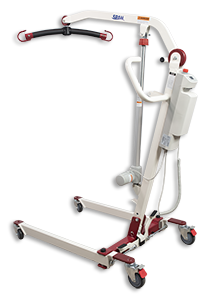
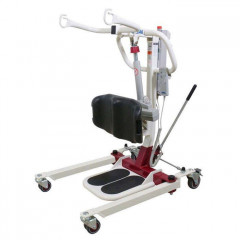
For individuals with significant mobility limitations, patient lifts are a game-changer. Devices like Span America’s powered sit to stand and foldable patient lift are designed to transfer users safely and comfortably from beds, chairs, or other surfaces. These lifts use slings and mechanical systems to support the user’s weight, eliminating the need for manual lifting by the caregiver.
By providing a stable and controlled transfer method, they reduce the likelihood of falls, strains, or injuries for both parties. They also promote dignity by offering a smoother, less invasive experience compared to manual handling.
Why it helps:
- Eliminates the need for caregivers to lift heavy loads.
- Reduces the risk of falls and injuries for patients.
- Offers a dignified transfer method for users.
- Use a Ceiling Lift or Gantry Lift For homes of long-term care needs, ceiling lifts provide a highly efficient and safe lifting solution. These systems use overhead tracks installed on the ceiling to move individuals smoothly between locations, such as from a bed to a bathroom or living area. Ceiling lifts are ideal for caregivers who need to perform frequent transfers without physical strain. By distributing the user’s weight across a secure track system, ceiling lifts eliminate the need for manual lifting entirely. They are particularly useful in homes where space is limited, as they don’t require floor-based equipment that can clutter rooms. Additionally, ceiling lifts can be customized to fit the layout of the home, ensuring seamless integration into daily care routines.
Why it helps:
- Completely removes the physical burden of lifting from caregivers.
- Maximizes space in the home by eliminating floor-based equipment.
- Provides smooth, secure transfers for users, enhancing comfort and safety.
Choosing the Right Equipment
By investing in the right equipment, you can minimize the risks associated with lifting, protect your health, and provide better care for your loved one. OSHA’s guidelines and the high injury rates among caregivers underscore the urgency of adopting safer practices. Don’t wait for an injury to take action—explore toilet lifts, patient lifts, and ceiling lifts today to create a safer caregiving environment.
Contact My Mobility Medics to discuss your needs and find the perfect solution. Prioritize safety and dignity in caregiving—your health and your loved one’s well-being depend on it.
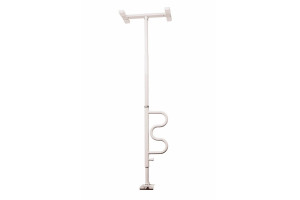 Home Safety Checklist
Home Safety Checklist
Home Safety Checklist - Falls don't just happen -They're often the result of a hazard in the home. Need an in-home assessment? We will go room to room and check for common hazards.
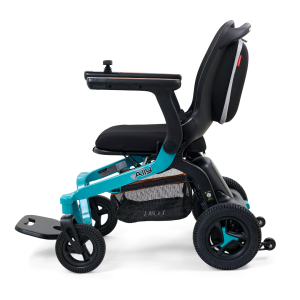 Top Travel Tips for Mobility Aid Users:
Top Travel Tips for Mobility Aid Users:
Top Travel Tips for Mobility Aid Users: Create Accessible Plans, Double Check hotel accommodations,
 Lifting our loved ones doesn't have to be dangerous
Lifting our loved ones doesn't have to be dangerous
Lifting our loved ones doesn't have to be dangerous


